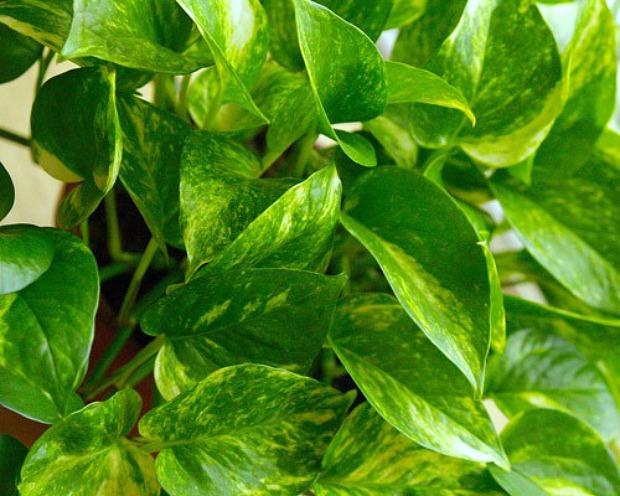Purify Your Indoor Air

Our air is more polluted than ever outdoors, but unfortunately we are not entirely safe indoors. Furniture, paint, cleaners, and other building materials actually leak chemicals and volatile organic compounds into our indoor air and can create health issues. But houseplants can be used to clean indoor air, whether you’re stuck inside an office all day or can’t open the windows to ventilate your home. These solutions are super easy and very green.
All plants clean the air by filtering our carbon dioxide and giving us oxygen (nice, those little plant friends!), but just as important, plants can make a huge difference in the health of our indoor air. Using plants to help improve the air quality is called phytoremediation.
Check out these 6 perennial houseplants that clean indoor air. These little green things can improve the quality of air in your home or office, and bring along calm, beauty, and improved creative energy to your space.
6 Perennial Houseplants that Clean Indoor Air
1. Spider Plants
According to Vibrant Wellness Journal, spider plants are, “a grass-like perennial in the lily family and [are] especially popular with beginners. It’s easy to grow and propagate and is very tolerant of neglect. Spider plants are among the best indoor plants for reducing formaldehyde.” Since some people (ahem, myself) have a hard time remembering to water plants, this seems like a great solution.
2. Gerbera Daisy
These are beautiful, almost cartoon-like colorful daisies that look great when in bloom, but are also beautiful leafy plants without flowers. Best of all, this widely available and easy to grow plant is effective in removing both benzene and trichloroethylene from the air. Pretty flowers plus cleaner indoor air? A WIN! Gerberas may bloom repeatedly with one flower at a time, but the greens will continue to grow throughout the year while indoors.
3. Aloe Vera
Aloe Vera is a triple win: aloe is very helpful at improving indoor air quality, it is a pretty plant that’s super easy to grow, and it’s medicinally beneficial. As a desert plant, aloe requires very little care, but works hard to remove benzene from the air. Benzene is released from paints and cleaning products. Keep aloe in a sunny spot, and be careful not to over-water. Be aware, some cats love this plant and might try to play with it!
4. Ferns
Frilly and fun, ferns can be a great addition to your houseplant collection. These relatively low-maintenance plants bring a happy dose of green to all rooms. Ferns are notable for removing formaldehyde from surrounding air better than almost all other plants. Some ferns need full light, while others can do with medium bright light. Ferns range from fine and frilly to large and funky. Find your favorite fern for the room size and lighting conditions, and be sure to watch for leaf dropping or browning, which might mean you need to brush up on your care routine.
5. Peace Lily
Another pretty plant that helps us breathe better air. This is a larger-size plant that can make your living spaces much more green and healthy. NASA says this humble plant can improve your indoor air quality by as much as 60 percent, as it helps reduce mold spores and can absorb vapors from acetone. The Peace Lily has lovely white flower and dark green, broad leaves.
6. Golden Pothos
This pretty and easy to grow plant is one of the few green things I’ve been able to keep alive in my home. Both of my plants were dug up from the forests outside Honolulu, and they have thrived over the years with minimal effort and in various conditions (outside, on a covered porch, and now indoors all the time. They grow prolifically, and periodically I trim them to keep their tendrils off the desk! This lovely green helps remove formaldehyde from the air.
All plant images from Shutterstock.










